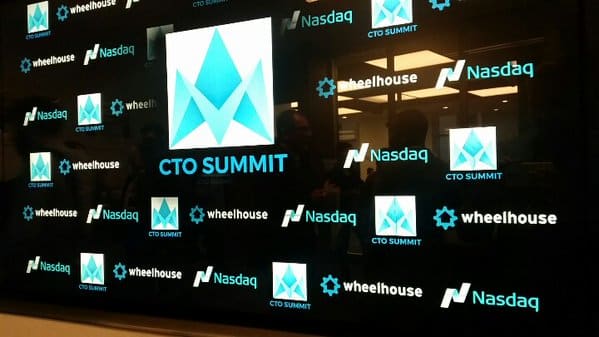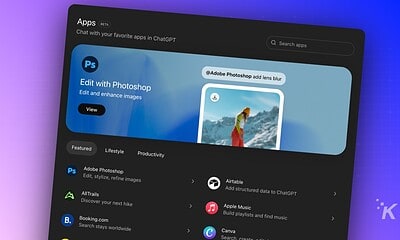Uncategorized
THE CTO REPORT: CTO Summit NYC 2015
Where are the salient truths of software architecture and development in this ever evolving landscape? We begin our inaugural expedition here, in a perfect place, the CTO Summit NYC.

Just a heads up, if you buy something through our links, we may get a small share of the sale. It’s one of the ways we keep the lights on here. Click here for more.
In this column we will focus on the best CTO’s, VP’s of Engineering, leaders in the technology industry and what makes them great. Where are the salient truths of software architecture and development in this ever evolving landscape? We begin our inaugural expedition here, in a perfect place, the CTO Summit NYC.
[dropcap]H[/dropcap]eld this year at the very formidable Nasdaq MarketSite in the heart of Times Square, Wheelhouse presented the CTO Summit NYC. On a rainy December morning, well-healed men and women converge upon a tech scene arguably second only to Silicon Valley. I must admit, I was impressed. The venue did fit the event well. According to Wheelhouse’s site, “Attendance to the event is strictly limited to engineering leaders.” Although, that did not hold completely true, most of the attendees where indeed tech leads of some sort. Even more impressive, most speakers stayed in between talks to chat it up with attendees and to hear others present.
There were many well-delivered methodologies and illuminating topics touched upon. Camille Fournier, Ex Rent the Runway CTO, showed us all how to navigate the reorganization of a department (“Rorgs”) with the grace of a veteran pilot. She eased the serious tone with slides craftily injected with images and quotes from 90’s movie, Clueless. John Colton, VP of Engineering, spoke proudly of the “Hackweek” at Squarespace. It is essentially an entire week in which developers have the freedom to work on anything they want. Colton notes that the week is like a “mental vacation of sorts.” And Squarspace has seen dramatic results with many ideas from Hackweek becoming shippable products.

Conway’s Law was mentioned at three different points during the conference. The law is a somewhat tongue-in-cheek nod to the idea that the software reflects the team that built it. It accentuates the idea that you have to get the people side right before the technology can mirror that. Amongst those who have spent many good years in the service of gaining knowledge and building the software that we all take for granted, we heard a different cord being struck. Of all the lofty ideas presented, it was remarkable that the most prominent theme was emotions. As it turns out, the human side of the tech world still matters, for now.
“Think about teams as managing humans and their brains.”
Jeff Ammons, Director of Engineering at Brigade, challenges us to “think about teams as managing humans and their brains.” The soft skills needed to manage a group of engineers or reorganize a team into “pods” of cross cutting concerns — is now at a premium. Yes, we who have the technical skill to build great software are in great demand. However, even fewer have the ability to manage those talented engineers. That part of it is a whole other ballgame. According to Ryan Hubbard, CTO of Updater, “the brightest devs aren’t always the best.” In addition, “they required more management and cared less about the business”, Hubbard lamented.
“Technical Debt is a sin! It is a crime!”
So how do we deal with these conflicting ideas? Ammons implores us to use behavioral psychology to encourage change in the workplace. Jeff emphasizes words that we engineers rarely take into consideration when trying to argue our points. Words like “feelings” have no place in my pitch for using a certain JS framework to revitalize an antiquated piece of technical debt in our front-end code. And as Ganjan Doji, Founder and CEO of Rhythm, exclaimed, “Technical Debt is a sin! It is a crime!” Our ravings are firmly grounded in so-called logic, cold hard facts, and for god’s sake, science! Well, aren’t they?
“Success in life is dictated by how many uncomfortable conversations you want to have.”
On the other hand, I know personally when I bring up ideas that would change the status quo at work, I get an uneasy sinking sensation in the pit of my being when I think of how other engineers will take it. They will hammer me with tactics Ammons speaks of — distancing, changing the subject, avoidance, intellectualization, or rationalization. That is also part of the rush for me. I like a challenge. But if I am being totally honest with myself, I don’t seek out these uncomfortable situations. An old parable asserts, “Success in life is dictated by how many uncomfortable conversations you want to have.” Mike Bouffard, VP Engineering at Greenhouse, recounted his reoccurring story of “taking the uncomfortable chair”. In which he would sit in the most uncomfortable seat in the room during meetings as a sign of leadership.

It is clear that leadership in tech goes far beyond the digital 1’s and 0’s and still has much to do with formatting our brain’s software correctly to interface with others. Welcome to the class they never offered in your highbrow M.B.A Computer Science curriculum: Intro to the Emotional Politics of the Tech Workplace 101. How do you deal with people? Or, better yet, how do you interact with the various personalities in your “guild, squad, tribe or chapter ”? Oh, you had no idea either? Damn, and you’re still paying off those student loans.
Thank god for the CTO Summit.
You can learn more about the speakers and Wheelhouse CTO Summit NYC here:
Connect with the Wheelhouse founders on Twitter:
Peter Bell – @peterbell
Nikolai Chowdhury – @chowdhury
John Paul Ashenfelter – @johnashenfelter
Adrian M Ryan – @adrianmryan

































